E-Archive
Good Vibrations
in Vol. 19 - September Issue - Year 2018
Mass Finishing for Decorative Surfaces – Did You Know?
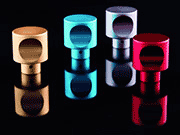
Finished and anodized fittings
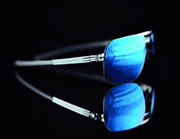
Mass finished eyewear
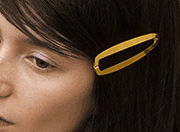
Polished and gold-plated hair slide
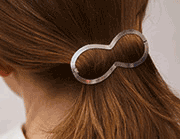
Polished hair slide
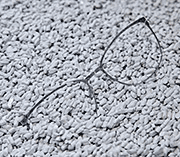
Mass finishing operation - polishing media
What role do mass finishing operations play in decorative surface finishing?
When it comes to mass finishing, many engineers immediately think of functional surfaces, deburring, the reduction of roughness, and component cleanliness. These are the classic topics related to this technology; however, numerous other innovative surface optimisation techniques have been used in past decades as the basis for the decorative finish. Whereas in the past, surfaces were finished using multi-layered galvanic coating (copper-nickel-gold / copper-nickel-chrome) or special paint applications, they are nowadays optimised by mass finishing operations to achieve the final colour base. In some cases, this resulted in a substantial simplification of the coating process (for example: chrome or gold plating), but it also meant that they had to be redefined (PVD plating instead of electroplating)
To give you a better idea of what this is about, one has to consider various aspects.
• Which are the application areas and target industries?
Often these are serially produced individual components that later become part of a high-quality end product. These could be, for instance, aluminium rims for mounting on exclusive vehicles, components for spectacles or jewellery, and nibs for fountain pens. Even decorative interior components such as handles, knobs and other fittings can be finished successfully using mass finishing operations during serial production.
• Where do the workpieces come from and what is their initial state?
The relevant workpieces stem from a wide variety of manufacturing processes: laser cutting, blanking/forming, machining, forging…
At the end of the mechanical manufacturing process one has a well-formed component that is only semi-finished because neither its edges/contours nor its surfaces meet the qualitative requirements. However, for follow-up processes to be possible in the first place, some edges, contours and surfaces must be machined to a defined state as early as possible in the manufacturing process. For example, the tools used in the blanking process are optimised to create a sharp edge with no burrs. In the turning process, the feed rate can also be reduced to achieve a pre-optimised surface quality.Depending on the surface structure of the blanks following the manufacturing process and the desired end surface, a corresponding mass finishing operation must be developed. Since some of the surfaces are very rough and uneven, the procedures can sometimes be complex and run in several steps.
• Which are the specific tasks?
It is essential to select the grinding and polishing media. There is a wide choice of ceramic or plastic-bonded abrasives on the market. The shape, size and grinding properties must be matched to the workpiece geometry, material and the aim of machining. As in the classical grinding technique, the abrasiveness of the applied grinding media becomes finer from level to level, which gives a correspondingly smooth/polished surface at each level. The first stages of such process chains are often assisted by mechanical or chemical additives, which increase the removal rate and thereby shorten the process times. The final stages of the process are often assisted by additives such as polishing agents. In order to keep the condition of the surface clean during the individual process steps, it is customary to dose special compounds (liquid or powder) with good cleaning properties into the processes. As part of process development, it is important to check which products are qualitatively, ecologically and economically viable. The next important task in process development is the selection of suitable systems technology. Different systems may be suitable, depending on material, geometry and machining task. Classic drum or vibratory finishing systems are still used up to this day and can be implemented in a variety of ways. But even high energy disk systems and drag finishing systems can be highly suited for individual processing steps or even all of them. The advantage of modern drag grinding systems is that they can be highly automated. Equipped with an intelligent feed system, such systems can work unattended for 24 hours and process items in series.
• How is the final process sequence defined and described? The process is usually developed step-by-step, based on a series of tests. All parameters are initially determined on the basis of experience and professional judgment. After each test series, an actual target comparison is made and the quality of the results is evaluated. Once the desired result has been achieved, all relevant data must be recorded in detailed documentation in such a way that the process can be reproduced at any time. Machine settings, processing times, dosing quantities and the type of grinding/polishing media are all essential parameters. Professionally and industrially oriented companies use tailor-made software that enables a structured documentation of different processes.
Once the correct process has been found and defined, it can be transferred from company to company at any time. Decorative components can then be machined by the manufacturer or even by external specialists. Specialist companies that are renowned for the development of such processes and/or the supply of suitable technology include, for example, www.rosler.com; www.walther-trowal.de; www.surfaced.de.
If you browse the internet occasionally, you'll find lots of familiar products. Did you know that mass finishing could be so decorative?
Good Vibrations
by Dirk Gather, Contributing Editor MFN and Managing Director of surfaced GmbH, Germany
Tel. +49.3301.5232.0
Fax +49.3301.5232.29
E-mail: dirk@mfn.li



























